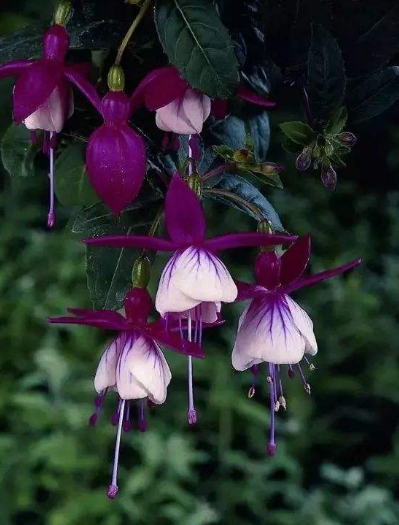How to plant Parthenocissus chinensis
How does ivy grow? Cultivation techniques of Parthenocissus officinalis
I believe many people like the kind of climbing green plants. This kind of plant not only has strong growth ability, but also has better visual effect of large and small pieces. Like a crawler, do you feel wrapped and protected outside the house? There are also heat prevention, air conditioning and noise reduction functions. The editor prefers these plants, especially through the window, to see the vision of scattered crawlers spreading outside the window, and feel better as a whole.

Parthenocero leaf TV background wall
Basic information about ivy:
Parthenocissus (Latin name: Parthenocissus tricuspidata) is also known as Stonehenge, maple vine, caterpillar grass, red silk grass, red goose, scorpion tiger, red vine, Bashan tiger, grape family. Summer flowers, florets, yellowish green, berries purple and black. It often climbs on walls or rocks and is widely used in China. The roots and stems of Ivy can be used as medicine to break blood and reduce swelling and poisoning.
How about ivy?
Ivy can be planted by sowing, cutting and layering.
[sowing method] after harvest, peel the seeds from the pericarp. After washing and drying, they can be stored in wet sand for a winter. Heat preservation and moisturizing are beneficial to germination. It's a good year in spring, and early spring can be sown in mid-March. Coverage can appear in early May, and culture can be carried out within one to two years.
[placement method] cut the stem 20~30cm in early spring, insert it into an open seedbed, fill it with water, keep it moist, and quickly make the vine survive. You can also use twigs with tender leaves in summer and autumn to shade and save water. It can quickly produce new branches with high survival rate and a wide range of applications. Insert a hard branch from March to April, cut the branch into 10-15 cm parts and insert it into the soil. The feet are permeable and keep moist. Twigs are inserted into the new year and carried out in the summer.
The bead method can be carried out by the wave bead method in wet and cloudless weather in the rainy season. The survival rate is high, and transplanting can be separated in autumn and planted next year.
Predator planting considerations:
The breeding and planting process of ivy should pay attention to the following:
1. Seeds sand and germinate. When the berries are purple in September, they are immediately removed, washed and dried, and surface sterilized with 0.05% carbendazim solution. After drainage, store the wet sand layer. In early March, a good year, soak the seeds in warm water at 45 °C for two days, change the water twice a day, then mix them with 2:1 wet sand seeds and place them in a shelter from the wind. The sun, cover the straw bag and spray water to keep it moist. . After about 20 days, 20% of the seeds will be sown in white.
2, sow seeds. First of all, the seed bed will be leveled, watered, the seeds and sand will be sown on the bed, the sowing amount is 100 grams per square meter. The forest is covered with 1 centimeter of loose humus soil, covered with a small arch shed and covered with polyethylene plastic film.
3. Seedling management. After unearthed cotyledons, the film was exposed to sunny and rainy days to increase soil temperature, promote the emergence of neat seedlings, and prevent damage from beetles. In addition, always sprinkle water to keep the soil moist.
4. Migration and post-management. After unfolding the true leaves into three pieces, choose cloudy days or after 3 p.m., transplant once; 1 foot density. Pour feces (1:8) immediately after planting. You shouldn't keep water for too long in the rainy season. After two months, the length of grapevines is usually more than 60 centimeters. At this point, a good topping can be carried out to prevent the grapevines from entangling each other and to thicken the vines. Pick up the heart once a month, plus auxiliary support. With the above measures, in the defoliation stage, the average thickness of seedlings can reach 0.5 cm or more, and can be planted.
5. Fertilize. Liquid fertilizer can be applied 2 to 3 times during the growing season. And often remove loose soil to make fences so as not to be submerged by grass to promote its strong growth. Ivy is afraid of waterlogging, so we should pay attention to prevent the soil from accumulating water. Ivy is resistant to pruning. In the process of growth, the branches and doors of doors and windows can be repaired to keep them clean, beautiful and convenient.
6, diseases and insect pests. Pay attention to the following diseases and insect pests: powdery mildew, leaf spot and anthracnose. Common aphid harm.
Ivy grows faster and climbs higher. If you plant it on the family balcony and other places, in order to prevent the crawler from climbing to the neighbor's house, it is better to say hello to the neighbor.
Time: 2019-05-17 Click:
- Prev

Family culture methods and matters needing attention of Persian chrysanthemum
The universe is a very famous ornamental flower. It comes from America in Mexico. However, it is now widely planted in China. It can grow by the side of the road, in the field or on the river bank, but now it is the family. Breeding methods, the following editor introduces the cosmic family breeding methods and matters needing attention.
- Next

Can the fuchsia be cultured?
Inverted Admiralty potted plants are suitable for guest rooms, flower stands and desk decorations. It can be inserted into the bottle with clean water, and can be viewed and rooted. Let's share our concern about the hydroponics of golden bell. I hope I can help you. Some friends think that this plant can only be cultivated in soil.
Related
- Fuxing push coffee new agricultural production and marketing class: lack of small-scale processing plants
- Jujube rice field leisure farm deep ploughing Yilan for five years to create a space for organic food and play
- Nongyu Farm-A trial of organic papaya for brave women with advanced technology
- Four points for attention in the prevention and control of diseases and insect pests of edible fungi
- How to add nutrient solution to Edible Fungi
- Is there any good way to control edible fungus mites?
- Open Inoculation Technology of Edible Fungi
- Is there any clever way to use fertilizer for edible fungus in winter?
- What agents are used to kill the pathogens of edible fungi in the mushroom shed?
- Rapid drying of Edible Fungi

